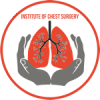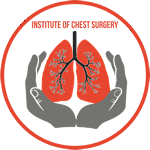Hernia and eventration of the diaphragm are medical conditions that affect the diaphragm, a vital muscle responsible for breathing. While both conditions involve the abnormal displacement of organs through the diaphragm, they differ in their causes and severity. Traditionally, surgery has been the primary treatment for these conditions. However, medical advancements have led to alternative management options in some cases. In this article, we will explore hernia and eventration of the diaphragm, their causes, symptoms, and whether surgery is the only treatment option.
Understanding Hernia and Eventration of the Diaphragm
The diaphragm is a dome-shaped muscle that separates the chest cavity (thorax) from the abdominal cavity. It plays a crucial role in respiration, as it contracts and relaxes with each breath, allowing the lungs to expand and contract. Hernia and eventration of the diaphragm both involve the weakening or malformation of this muscle, leading to abnormal protrusions.
1. Hernia of the Diaphragm:
A diaphragmatic hernia occurs when there is a hole or weak spot in the diaphragm, allowing abdominal organs (such as the stomach, liver, or intestines) to move into the chest cavity. There are two main types of diaphragmatic hernias:
a. Congenital Diaphragmatic Hernia (CDH):
This type is present at birth and results from incomplete diaphragmatic development during fetal development.
b. Acquired Diaphragmatic Hernia:
This type develops later in life due to trauma, surgery, or prolonged pressure on the diaphragm.
2. Eventration of the Diaphragm:
Unlike a hernia, an eventration of the diaphragm involves the abnormal elevation of a portion of the diaphragm, allowing the abdominal organs to push against it. In this condition, the diaphragm retains its integrity but functions abnormally. Eventration can be congenital or acquired, with the latter caused by injury, paralysis, or neuromuscular diseases.
Symptoms and Complications
Both hernia and eventration of the diaphragm can present with similar symptoms, including:
- Difficulty Breathing: As the displaced organs press against the diaphragm, lung expansion can be limited, leading to shortness of breath and breathing difficulties.
- Gastrointestinal Symptoms: Patients may experience abdominal pain, bloating, or difficulty swallowing due to the movement of abdominal organs into the chest cavity.
- Respiratory Infections: The displacement of abdominal organs can obstruct the airways, making individuals more susceptible to respiratory infections.
- Blue-tinged Skin (Cyanosis): Severe cases of diaphragmatic hernia or eventration can lead to reduced oxygen levels, resulting in cyanosis.
Treatment Options
For many years, surgery has been the standard treatment option for diaphragmatic hernias and eventrations, especially when respiratory distress or organ dysfunction is present. Congenital diaphragmatic hernias, which often require immediate intervention after birth, typically necessitate surgical correction.
Surgical repair is often performed via laparoscopy or open surgery, depending on the complexity and severity of the condition. Laparoscopic surgery involves making small incisions and using a camera and specialized tools to repair the diaphragm. Open surgery involves a larger incision and direct access to the affected area.
Conservative Management
In select cases, particularly for asymptomatic or minimally symptomatic eventrations, conservative management may be considered. This approach involves close monitoring and lifestyle modifications to manage symptoms and prevent complications.
Lifestyle modifications may include weight management, avoiding strenuous activities, and proper posture to minimize pressure on the diaphragm.
Non-Surgical Intervention
For some patients, especially those who are not suitable candidates for surgery, non-surgical interventions may be explored. These could include respiratory therapies, pulmonary rehabilitation, and medications to manage symptoms and improve lung function.
Conclusion
Hernia and eventration of the diaphragm are significant medical conditions that require careful evaluation and management. While surgery remains the primary treatment option, it is not the only approach for all cases. The treatment plan should be tailored to each patient’s specific condition, medical history, and overall health.
If you suspect you or a loved one may have a diaphragmatic hernia or eventration, it is essential to seek medical advice promptly. Early diagnosis and appropriate treatment can lead to better outcomes and improved quality of life. Always consult with a qualified healthcare professional to determine the best course of action for your individual needs.







